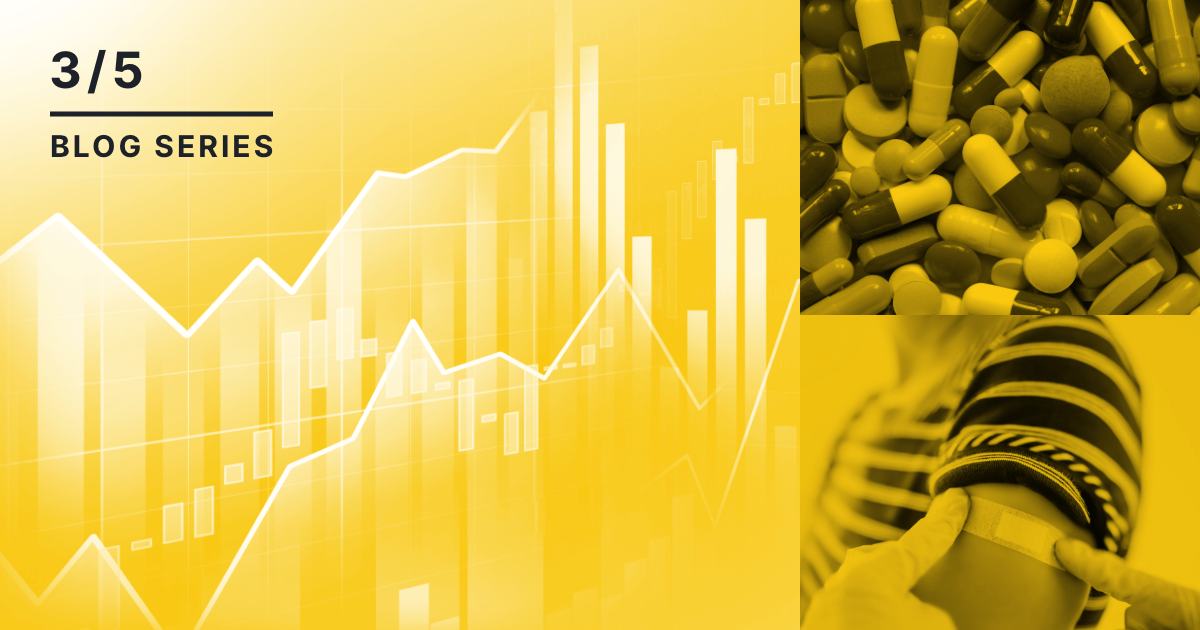In our series on how Privacy-Preserving Record Linkage (PPRL) technology can help government agencies synchronize the proliferation of real-world data (RWD) to better preserve and promote public health, we have already discussed disease surveillance for a rapid response to outbreaks. Now, we delve into the role of RWD in monitoring and improving drug safety.
While randomized clinical trials (RCTs) are the gold standard for gaining regulatory approval for drugs and medical devices, they are limited in studying the long-term safety and efficacy of a product. The studies are usually designed to run to a certain event or endpoint, such as a heart attack two years post treatment, but may not be designed to capture outcomes 10 years into the future. Additionally, with trial size constraints and inclusion and exclusion criteria, RCTs may not represent use in a real-world setting or include patients with comorbidities.
The FDA and other healthcare organizations have acknowledged these limitations and are taking action through the incorporation of RWD. Following are some examples:
- Sentinel Initiative - Launched in 2008, the Sentinel Initiative is a national program between the FDA, Mass General Brigham and Harvard Pilgrim Health Care Institute that uses RWD for over 100 million people to monitor the safety of FDA-regulated drugs and other medical products. The Sentinel Initiative has continued to grow and evolve, transforming the way researchers monitor the safety of FDA-regulated products and becoming the largest curated database in the world dedicated to medical product safety.
In 2019, the Sentinel Innovation Center was created as part of the Sentinel Initiative to explore methods for synchronizing electronic health record (EHR) data with the already-curated insurance claims, providing more clinical detail to address any gaps in the Sentinel System’s capabilities. HealthVerity was selected to participate in this undertaking. During the 14-month project, select EHR data from the vast HealthVerity data ecosystem that has been converted into the Sentinel Data Model is being evaluated to ensure the data is fit for purpose. -
Biologic Effectiveness and Safety Initiative (BEST) - Also part of the Sentinel Initiative, BEST monitors the safety of vaccines, blood and blood products, tissues, and advanced therapeutics. Started by the FDA’s Center for Biologics Evaluation and Research (CBER) in October 2017, BEST uses data from EHR and claims, and is working on establishing an automated adverse event reporting system using natural language processing and artificial intelligence. Their vision is to be the “pre-eminent resource for evaluating biologic product safety and effectiveness that leverages high-quality data, analytics and innovation to enhance surveillance, real-world evidence generation and clinical practice that benefits patients.”
-
National Evaluation System for Health Technology (NESTcc) - NESTcc is a voluntary network of data partners who received a grant from the FDA in September 2016, forming a public-private partnership to advance medical device technology. NESTcc consists of Coordinating Centers that offer services to catalyze real-world evidence generation for medical devices and health technology research sponsors, as well as a Collaborative Community comprised of representatives from across the medical device ecosystem working together to develop thought leadership and advance innovation, and a Research Network that collaborates with leading health organizations to curate high-quality RWD from multiple sources across 220 million patient records.
-
Vaccine Adverse Event Reporting System (VAERS) - Established in 1990 by the CDC and FDA, VAERS is a self-reporting system that relies on the general public to report any adverse events they experience after receiving a vaccination. The data is analyzed to detect unusual or unexpected patterns that might indicate a possible safety issue with a vaccine.
Even as recently as September 28, the FDA partnered with the Duke Margolis Center for Health Policy to share their latest projects and plans to further incorporate RWD into FDA-regulated drug and medical product safety initiatives.
Powering drug safety innovation
As observed in these drug safety, biologic and medical device surveillance initiatives, a single, siloed data source is not enough to understand safety and the real-world impact of medical products, particularly when it comes to complex biological interactions.
Relying on a single data source can provide a fragmented view of the patient journey. For example, when utilizing closed claims payer data, while you have insight into the patient journey across healthcare settings, it lacks granularity and, if a person switches insurance providers, you could lose that insight entirely. Using sources from particular EHR or hospital systems provides robust data, but only for the services rendered through those systems. To continue to make these amazing strides in drug safety requires Privacy-Preserving Record Linkage to accurately synchronize multiple data sources while maintaining patient privacy.
The HealthVerity FedRAMP-authorized PPRL solution, Identity Manager, goes beyond legacy tokenization techniques by using a universal de-identifier known as a HealthVerity ID (HVID). HVIDs are matched from a continuously updated referential database of over 200 billion healthcare and consumer transactions that leverages probabilistic matching with machine learning techniques to handle the inherent noise in RWD. This provides 10x greater accuracy than a traditional de-identification token and has enabled HealthVerity to create the nation’s largest fully interoperable and HIPAA-compliant healthcare and consumer data ecosystem, allowing government agencies to seamlessly synchronize a near endless combination of data sources.
In the next installment of our five-part series, we will discuss how government agencies can leverage RWD to analyze health outcomes to help support researchers, advance treatments and improve equity in care.
Click here to learn how HealthVerity can help your agency improve drug safety monitoring or support other data initiatives.





